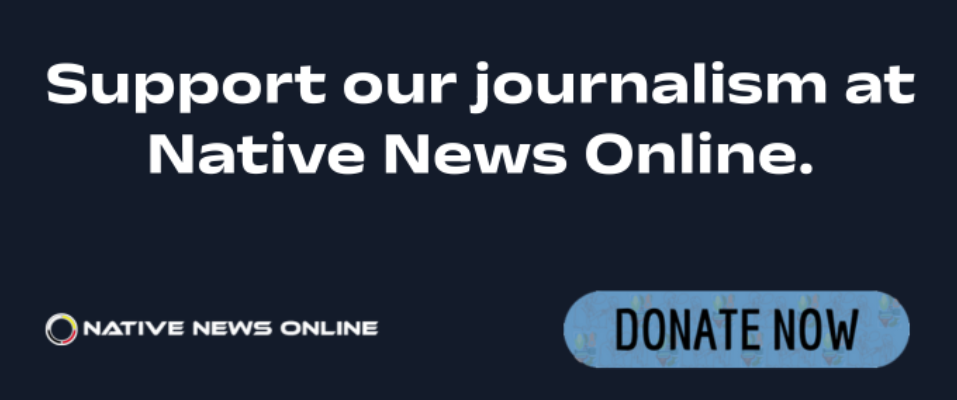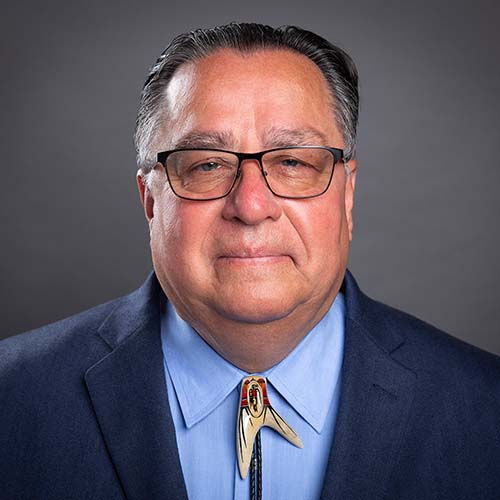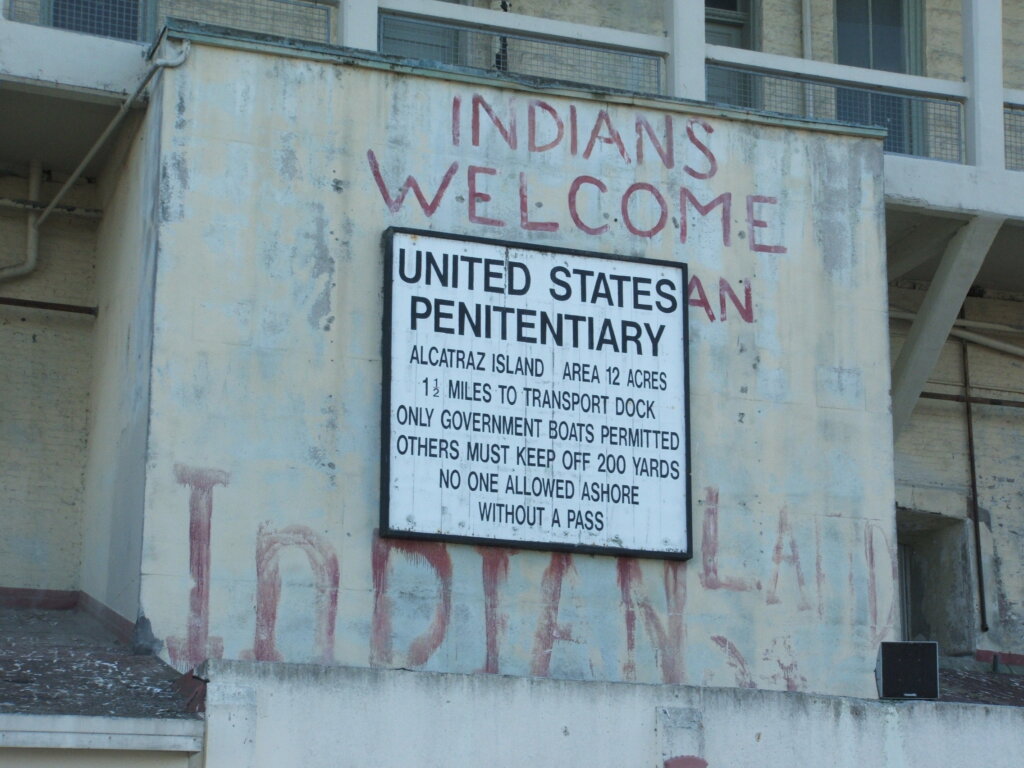
- Details
- By Levi Rickert
Before sunrise Thursday, hundreds of Indigenous people and non-Native allies are expected to gather on Alcatraz Island for the annual Indigenous Peoples Thanksgiving Sunrise Gathering, organized by the International Indian Treaty Council.
The ceremony, first held in 1975, draws participants from across the country who travel by ferry from San Francisco to honor Indigenous resistance, survival and renewal. Aside from the Covid-19 pandemic, the gathering has taken place each year since its founding.
Alcatraz Island has become a powerful symbol for many Native people — a place tied both to historical struggle and ongoing hope. Once home to the federal penitentiary known as “the Rock,” the island housed some of the nation’s most infamous inmates, including Al Capone, until the prison closed in 1963.
Afterward, Native activists urged the federal government to return the island to Indigenous stewardship. Their efforts culminated in the 19-month occupation of Alcatraz from November 1969 to July 1971. Led by Mohawk activist Richard Oakes; LaNada Means (Shoshone-Bannock), now Dr. LaNada War Jack; Grace Thorpe (Sac and Fox), daughter of Olympian Jim Thorpe; and Tuscarora medicine man Mad Bear Anderson, the occupiers became known as the Alcatraz Red Power Movement, or “Indians of All Tribes.”
The occupation drew widespread support from Native leaders and community members. Prominent figures from the American Indian Movement — including Dennis Banks, Russell Means and Clyde Bellecourt — traveled to the island. Wilma Mankiller, who would later become the first female principal chief of the Cherokee Nation, also spent time with the occupiers.
Since 1975, Indigenous people have returned to Alcatraz each Thanksgiving for a sunrise gathering once widely referred to as “Un-Thanksgiving Day,” a counter-observance that challenges the national holiday’s traditional narrative.
If You Go
Ferries to the ceremony depart from Pier 33 Alcatraz Landing in San Francisco. Visitors must wear face coverings while in the boarding line and aboard Alcatraz City Cruises ferries. The landing area, including the ticket booth and waiting zones, is accessible, and accessible restrooms are available at Pier 33 and on all vessels.
There are no wheelchairs available at Pier 33 or on Alcatraz Island.
Departure times: 4:15 a.m., 4:30 a.m., 4:45 a.m., 5:00 a.m., 5:15 a.m., 5:30 a.m., 5:45 a.m. and 6:00 a.m.
Dress Code: The weather on Alcatraz is unpredictable and subject to change unexpectedly, so be sure to dress in layers…bring along a light jacket or sweater, no matter how nice the day begins! Follow this link for more information. 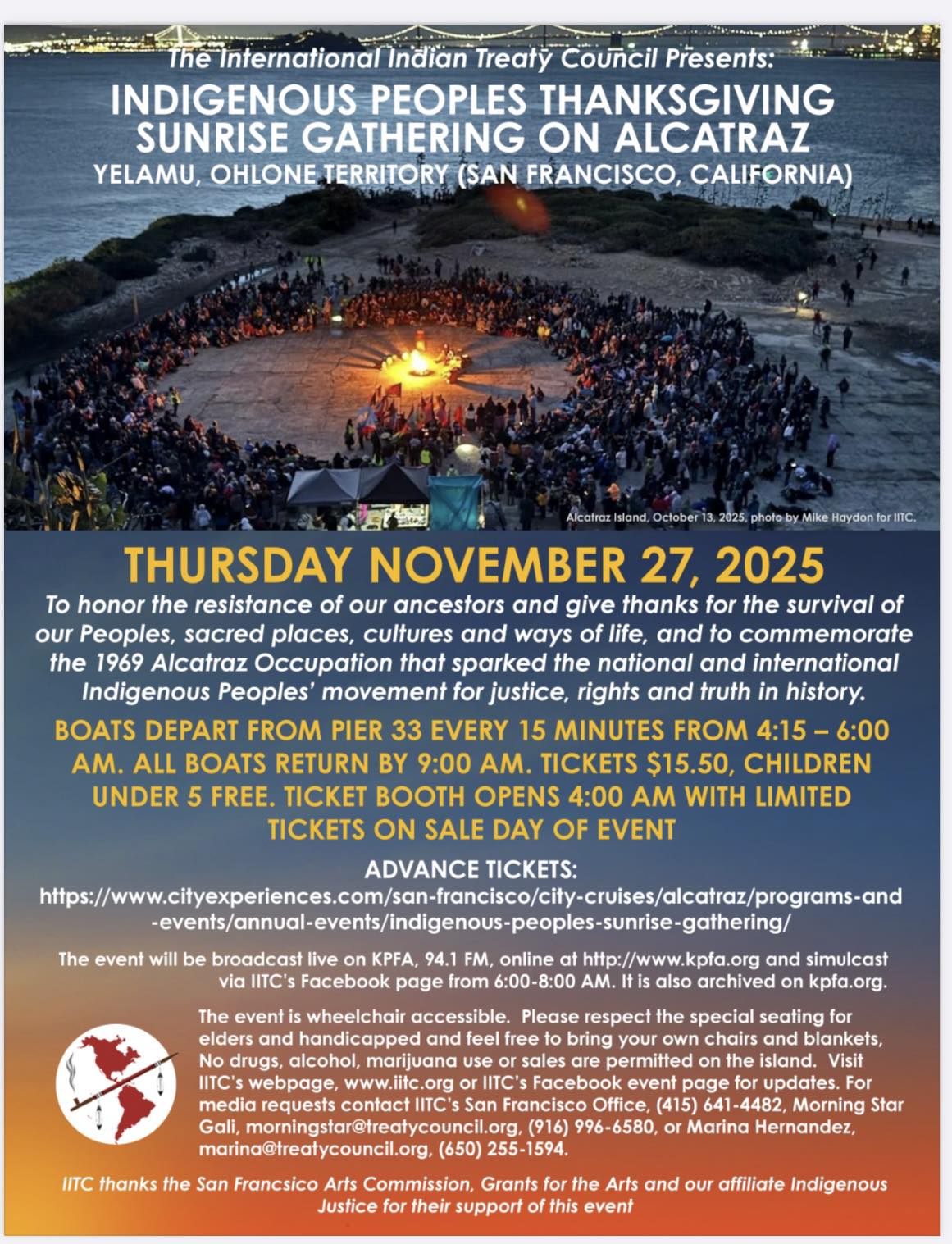
More Stories Like This
50 Years of Self-Determination: How a Landmark Act Empowered Tribal Sovereignty and Transformed Federal-Tribal RelationsCherokee Nation Launches Digital Dictionary to Support Language Revitalization
Prairie Band Potawatomi Nation Chairman Addresses Homeland Security Contract
Lancaster County to Recognize Conestoga-Susquehannock Tribe on Massacre Anniversary
How the Gaming Economy Helps Tribes Navigate Shifting Policies
Help us defend tribal sovereignty.
At Native News Online, our mission is rooted in telling the stories that strengthen sovereignty and uplift Indigenous voices — not just at year’s end, but every single day.
Because of your generosity last year, we were able to keep our reporters on the ground in tribal communities, at national gatherings and in the halls of Congress — covering the issues that matter most to Indian Country: sovereignty, culture, education, health and economic opportunity.
That support sustained us through a tough year in 2025. Now, as we look to the year ahead, we need your help right now to ensure warrior journalism remains strong — reporting that defends tribal sovereignty, amplifies Native truth, and holds power accountable.
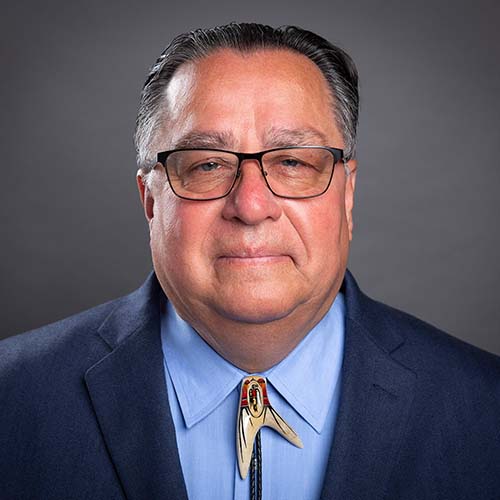 The stakes couldn't be higher. Your support keeps Native voices heard, Native stories told and Native sovereignty defended.
The stakes couldn't be higher. Your support keeps Native voices heard, Native stories told and Native sovereignty defended.
Stand with Warrior Journalism today.
Levi Rickert (Potawatomi), Editor & Publisher

